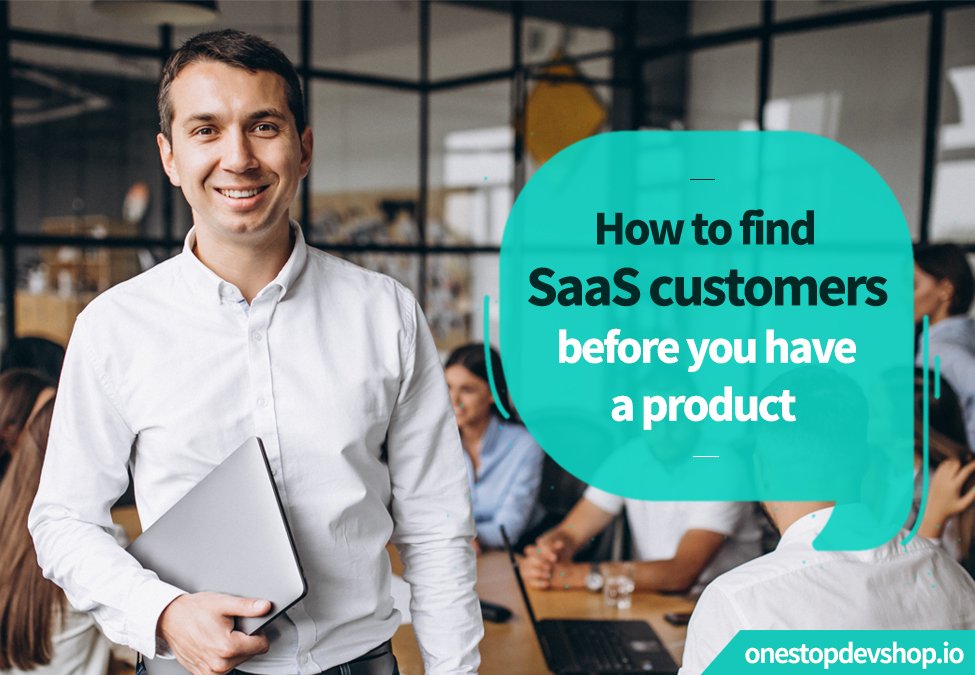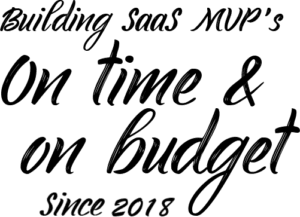I hear this question all the time. How do I find a money making software as a service (SaaS) idea that people are willing to pay me for without having to build the solution first?
There are a number of ways to do this. Here’s an example of something I found just yesterday, looking for a problem I was trying to solve myself.
SaaS idea #1
A calendar solution idea that allows you to have a thank you page after the person books a call so
1) marketers can set up a conversion event tracking pixel
2) you can send them other offer ideas
3) you can get them in your funnel with an upsell.
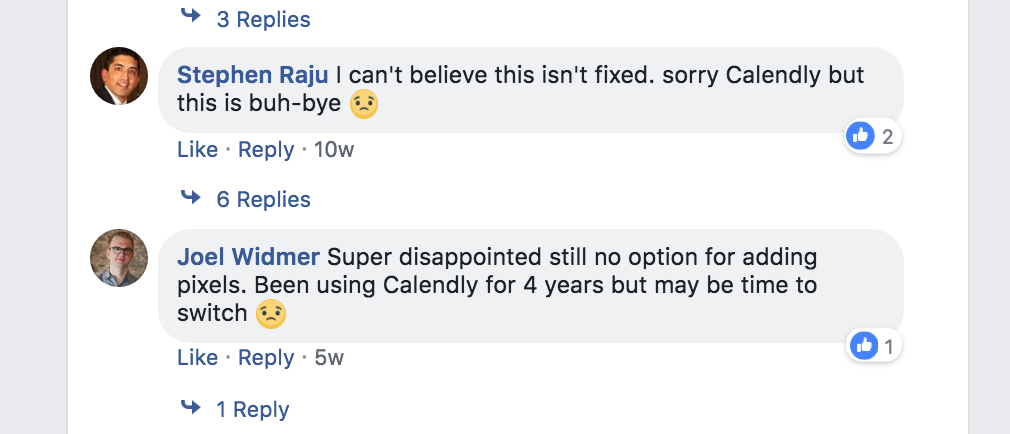
To check out the details, and get a list of possible customers, Onestop Devshop SaaS ideas. Seriously, this post is damn gold. Do you have any idea how easy this application would be to build? And in the post, you actually have a list of potential customers just waiting to give you funds for the app before it’s built. If I were an enterprising entrepreneur that wasn’t already working on another project full time, I’d simply message each one of these people 1 by 1 and say. Hey, I’ve got an idea on how you could fix this. Are you interested in chatting about it?
I counted dozens of people, DOZENS of potential customers BEGGING for one simple feature. A calendar tracking application that has a thank you page. Calendly must have so many customers, that it doesn’t care if it loses their own or doesn’t build this feature in to get more.
Check it out for yourselves, but not before you finish reading this post, because I’m going to give you another SaaS idea that I’ve already validated with over 40% of the people in a market. A market that has many millions of users.
To start, I’ll bring you back to a conversation I had just two weeks ago…
“What’s your ETH address? I am going to send back the ETH you sent me. I have been sidetracked on another project, and will not be moving forward with this idea.
What? ah man, too bad, because I was needing this app…”
I was actually looking forward to closing this, and moving on so it was actually with a sense of relief that I was sending money back to someone I had now built up a close client relationship with.
But let me explain.
What I’m about to tell you is the exact process I used to find 4 paying customers in the crypto trading space for an app that I had nearly half funded. Halfway through the process, I stumbled on to something that I felt was better aligned with my skill set. This blog is part of that new business. These customers were more than happy to pay me 12 months in advance to solve this core problem.
If you want to know what the exact idea was because it’s now been validated with 15 out of 35 crypto traders to be a problem to a serious problem, leave a comment below and I’ll address your questions. This idea is just ripe for the taking, I hope someone does develop it because I’d be a customer too!
So, on to the process of how to do find customers for a SaaS before you even have a software product or idea.
The idea of pre-selling a software service is not my idea, and certainly, the idea of pre-selling items that people don’t own is common in other markets. Real estate spec builds, selling stock on margin (where you sell the security at a higher price, something you don’t own, and buy back lower in the hopes of making a profit), the list goes on. I was introduced to the idea by my friend, and mentor-at-a-distance, Dane Maxwell, who started the Foundation. The Foundation is a course I took years back, and I started my own SaaS business, WaveReview. I’m also a mentor in the course, so if you join, you’ll see me there too.
So, how does pre-selling your SaaS customers work?
Well, I think the best explanation is for me to guide you down the path I just took for the third or fourth time.
The first time was starting my own SaaS, WaveReview.
The second was pre-selling $60,000 of organic sea salt through a health affiliate in an eCommerce business I’ve since sold. At the time, We had some samples, and we had some copy, a good copy. We sent the samples to a large health affiliate, they loved it, and the copy was good enough that we were able to sell $60,000 in one email blast after 4 days. We kept selling for another 30 days and we had banked $90,000 in the first month. By that time, we could order the salt and put together the supply chain and our own website to handle future orders. All without having a single grain of salt in the US, our primary market. By this time, I was basically hooked on the concept of pre-selling every future business endeavor for life.
The third time was through this business, OneStop DevShop (a story for another time perhaps), and the fourth time, for a SaaS I was investigating in the crypto trading space.
Read on to hear how I did it for this space.
Find an audience and start digging in to find pain
As I’m now 100% completely comfortable with the idea of pre-selling items to gauge interest in the level of pain, it starts with generally just speaking with people. Since I tend to view a business idea as the single step in what could be a much longer journey, I make sure I step into a market niche where I want to be talking with the customers for possibly the next 10 years. Therefore, the idea behind picking your niche should take some fairly careful consideration, because you might be marrying yourself to this market segment for some time.
In the past, I’ve been involved with hoteliers. I had a WiFi business that put access points into tens of thousands of hotel rooms in Mexico and Latin America. I sort of fell into this idea because I wanted to learn Spanish, full immersion-style language learning you could say. I sold this company in 2017, and they’ve since changed the name and moved on. My Spanish speaking, and bank account all the better for it.
For a particular niche, I selected recently, I had been involved in crypto trading for about two years. The crypto market (at the time of this writing) had been going through a nasty bear market, and I figured I had some time to develop a picks and shovels business in the space. I went into a deep dive into crypto because I was interested in this market, I am still very bullish on the technology and believe in it, and I knew the market well.
Considerations when selecting a market niche.
Does the industry, in general, have money to spend on software?
An example here is my other SaaS has part of its segment selling to yoga studios and salons. Part of the problem with this market segment is SMB (small, medium businesses) and this would range in the very small business owner segment, can balk even at spending $49 per month for a monthly software. I tend to keep this in mind when I select a market segment. In general, realtors, lawyers, doctors, construction contractors, accountants, consultants, all of these types of businesses would be happy to spend a few hundred dollars a month on software if it saved them thousands of dollars per month. As a rule of thumb, I like to find a pain that businesses will pay between $50 – $500 per month for the service. Anything lower than $50, and it becomes too difficult to collect enough pre-paying customers to fund your SaaS.
Is the customer business to business (B2B)?
My friend Dane recommends B2B only, and I wholeheartedly agree with him. Interestingly, the crypto space isn’t really B2B, and this was one of the main problems I had contacting the market in my crypto SaaS. I’ll explain further, but the reason to go with B2B rather than B2C is that it’s easier to find the businesses to contact them. This is especially important in the beginning when first trying to contact the people that make buying decisions in the market. There are lots of ways you can find out how to contact businesses; buy a list, scrape LinkedIn, google maps for local businesses in your area, or even just walking down the street to chat with a business owner.
Does the market contain at least 100,000 potential customers?
In general, I wouldn’t select a market that was so specialized that it contained only a few thousand potential clients. Why? Well, if you think about it, even Apple and Google don’t all of any market. If I want to give my business a fighting chance of surviving the first 2 or 3 years, I need to be growing it quickly to a few hundred users. If I want the business to be a potential $100M business, I better have a lot of customers on the backend to be able to tap into. Pretty simple.
Do I know anything about this business segment?
This is less important, but it can help you jump-start the process if you don’t have to learn the industry. For crypto trading, I had been trading myself and in general, I had come into my own problems as a user. It was easy for me to jump on a call, or verify in a chat message if someone else was having the same problem. This is not to say that you can’t learn the pains of a new industry relatively quickly. I would say inside of 45 days, and after speaking with 25 – 30 people, you should, in general, have a pretty good idea on how an industry works, the common pains and frustrations they experience, and by that time some common SaaS ideas that people will pay you at least $100 per month to figure out.
Contacting the market
Once you’ve picked an industry niche or market you’ll need to figure out ways to contact them. The easiest method is to hop on google, and type — email list for XXXX. Pretty quickly, you’ll be able to find plenty of list brokers that will sell you up to 1M emails. As a negotiating tactic, I always start the conversation out with – I’m interested in buying a list type of email. They’ll respond back wanting to sell you 5,000 and up, but I always start out with a much smaller number. This is because it’s cheaper, and you can easily tell the quality of the list within a few hundred emails. You should be able to get emails anywhere from $.05 to $.20 per email. I start with 1000 because I can’t usually get this for $100 or $200. Pretty low-risk threshold to test a market segment.
You’ve got your list. Now what?
Build a lookalike audience and run some test ads of potential concepts
Well, there are a few things you can do with a list. You can email them, or you can go into your business Facebook account and build a lookalike audience. Building a lookalike audience can give you a powerful tool to test concepts through Facebook ads, and also give you a better idea of the interests your niche is interested in on Facebook. The how to’s of doing this are beyond the scope of this post, but you can simply google – how to build a lookalike audience with a .csv file. Once you’ve built your audience, you can start running simple Facebook ads asking them whatever you want, or even gauging the interest in a potential SaaS idea by the number of likes on a post.
Run some MSN ads to ask questions.
I’ve been finding huge success with MSN ads, to start a conversation with an open-ended question. An example could be — I’m digging into the pains of the XXXX industry. Can I ask you what’s the most frustrating part of your day?
Or – what’s the biggest frustration you’ve been dealing with over the last 3 months?
This gets the conversation going, and from there, the objective is to get as much detail about this pain. For me, that’s always getting the person on the phone. And if you can get that person on the phone with a small micro commitment like – you sound very knowledgeable, do you mind if we set up a 5-minute phone call where you can tell me more about this?
You’d be surprised by how many people will take you up on this offer. And of course, once you get them on the phone, the objective is to build rapport and have them stay on for as long as you possibly can. I’ve found some of my best ideas after 45 minutes of being on the call. My best calls could even be learning about their business for 30 minutes and going as long as I can. If that’s a problem for you because you only have so many hours in the day, you can guide the conversation towards the pain points faster. I’ll go more into this further down in this post.
Cold Email outreach
The other thing you can do with your email contacts is simple. Start a cold email campaign. For my crypto traders, I was able to buy a list of bitcoin investors, but I also found that hiring a VA or using your current personal assistant to build a list of 15 potential customers daily in LinkedIn was just as successful or as using my email list. For the most part, you want to make sure your email contains a person’s name. You don’t want to be sending emails to info@company.com, because they’ll only get deleted. Spend some time to find the appropriate person in the organization to speak to. That person should obviously be the person that will make the buying decision for your potential software.
The email that I generally use goes along the lines of this one, which is the actual template I used to contact my crypto traders.
Subject line — Can you help me? (or even better, if you can put in their first name) I usually get 50% open rates with this one.
Hey Brian,
Read your blog post on the XYZ LinkedIn and thought it was great, so I thought I’d reach out. My name is Geordie and I am a software entrepreneur doing research on [market name]. My goal is to learn about the biggest pains you have running your business (or trading crypto) and to solve a big problem that will make your life easier.
What are your biggest frustrations with managing your business/crypto trading/whatever?
Love to hear back from you, even if it’s only one sentence.
Be well,
Geordie
+xxxx xxxx
I usually put in my LinkedIn profile, so they can see who I am. This has the added benefit of building up my LinkedIn profile during my campaign. When I was doing this, my LinkedIn profile numbers jumped from 1000 to 2,200 in about 40 days, just from people checking out my profile and adding me. They even did this if they didn’t respond to me in the original email. If I wanted and they were in my niche, this made it easier to contact these people directly through LinkedIn. Which, you can do by the way, but I find it much less effective than simply emailing them. Another friend of mine has been using LinkedIn as her primary marketing channel by sending a short message to each potential lead for years. It’s definitely a way you can reach people, it’s just not one of my highest leverage activities but in the beginning, you may want to use it.
![]()
Using Chat Forums, or FB Groups, telegram groups
I actually found two of my customers that prepaid me for my solution in a paid-for chat room. The room happened to be paid for, but there are literally thousands of Facebook groups, LinkedIn groups, telegram groups, WhatsApp groups, Reddit pages, subreddit pages, where you can use the same ideas. In general, I’d become active for a week or so in this group to make myself known. Mostly, commenting where I could be helpful and answering people’s questions. When someone likes your comment, answers back, you can break off into a one to one conversation. When I start that one to one conversation, I use the same general intro as the email.

OR
Hey, xxx, Nice to meet you. I have a quick question for you. I’m a software entrepreneur (say this, even if you’re not, you actually now are because you’re hustling an idea in a new market, and this makes you entrepreneurial) doing market research in this space. I’d love to ask you a simple question – what’s the biggest frustration you’ve had with your business in the last 3 months?
This usually starts the conversation, and you can lead it in any direction you want. It also builds rapport, and the nice thing about a chat, as opposed to email, is that you can start it back up later and people are in general more responsive in chat messages.
Again, the idea is to get them on the phone and keep them on the phone for as long as possible. Usually, I cleared out my schedule for 90 minutes for each call in case it went longer. Trust me, this is the most important, highest leverage activity you can do all week, so whatever you’re doing, clear your calendar for this event. This is where you will find gold, coming directly from your customer’s mouth. After going through this with hundreds, nay, thousands of contacts, it’s hard enough getting someone on the phone that when you get that person on the phone, stay on with them for as long as you can.
How to handle the call – Idea Extraction
The general script that I use goes somewhere along the lines of this, but I wrote a much more detailed breakdown of my call in the blog post – how to do idea extraction.
Start the conversation off with some rapport building. One of the best ways to do this by starting with the question.
Hi Brian,
This is Geordie, we were talking on Facebook/email about your frustrations in industry x. We have a scheduled call now, is this still an OK time to chat?
If it is, then he and you will be more relaxed.
Honestly, the first time I started doing Idea Extraction, I was terrified. So if you are, it’s completely normal. My friend Dane of the Foundation gives tons of helpful tips on mindset and dealing with this on his blog. Go check him out if you want to learn more. It’s actually a lot easier than you think. This past time I did idea extraction, just 3 months ago, it was much easier. But, I still had some pangs of procrastination before making the call. All I can do is reiterate that these are just people, and the fact that someone has already agreed to speak with you means more than likely they are predisposed to having a frank and friendly conversation with you. You’ll be surprised at how easy it is to do, and if you think about it, how many people have asked to speak with you about you problems?
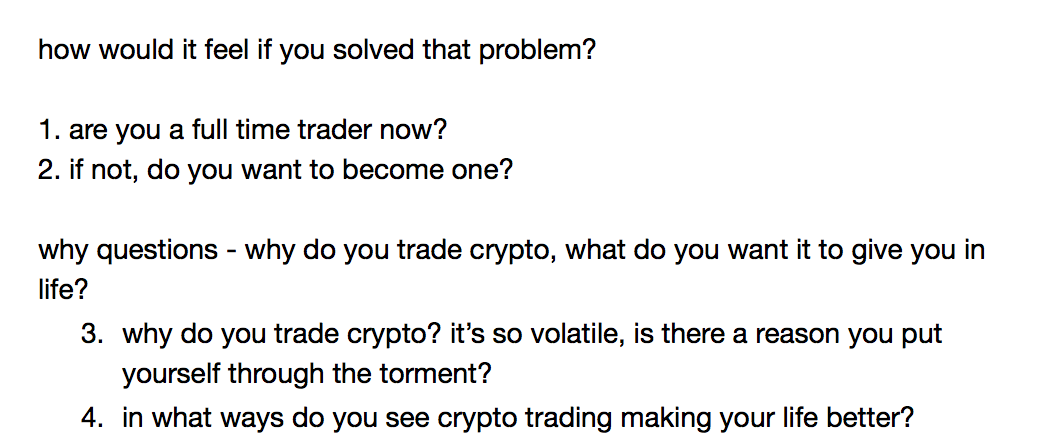
Some of the most important questions to think about are.
- What is the single most frustrating problem you or your business has had to deal with over the last 3 months?
- are there any manual tasks that you do, that drive you crazy? for me there, is i track daily the price of my port because coin tracking doesn’t bring in all my data. have to use excel
- anything your mobile phone can’t do that you’d want it to do?
- what sources of information do you follow?
- What is the most critical component of your day?
- Could you walk me through your day?
- What is the first [second, third, etc] thing you do in the morning?
- what do you measure in BTC or USD, AUD? what is most important for you?
- what software do you use now, and pay for?
- any Facebook groups or telegram groups that you are a part of?
- What is your most challenging aspect of generating revenue?
- What would help you generate more money in trading
- What’s the most frustrating part of your trading?
- What software do you wish existed but you can’t seem to find it?
- “If you had unlimited resources, what would you develop to make your day more productive
- Think about the last couple of days trading, what have been your biggest struggles lately?
- What manual tasks in your daily routine would you like to automate?
- Do you have any ideas on what would make your job easier?
- Are there any features missing in your current software that you wish existed?
- What is the most expensive problem in your business? Do you think this could be automated?
- Are there any areas in your business where duplicate data entry exists?
- Is there anything you want to do with your mobile phone that you can’t right now?
- What’s a problem you’ve tried to solve in the past but it didn’t work out?
- 3 do you pay for any apps, if so, which ones, how much are they?
Any time that you get to something interesting, stop the conversation and dig deeper. The easiest way to do that is to simply ask the question why. There is a concept called the 5 Whys which can find the root of any problem. Don’t rush this part, you can find your best answers here.
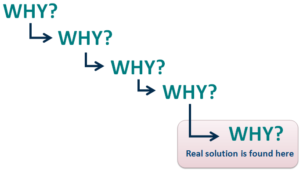
Some good why questions for example in the crypto space were for me —
- First Why Why do you trade crypto?
Because I want to be rich. - Second Why Why do you want to be rich?
Because I want to be able to provide for my family. - Third Why Why do you want to provide for your family?
Because it will make me feel like a better father. - Fourth Why Why will that make you feel like a better father?
Because when I was growing up, it was something my father did for me, and I want to live up to his expectations. - Fifth Why Why do you want to live up to his expectations?
Because my father was someone that people loved and admired, and I love and admire him and I never felt like I was living a life that quite measured up to his.
Woah, now you see how can find the root of the real reason why someone is struggling with something?
Armed with the 5 whys, you’ll be in a much better position to get to the real crux of a software problem so that you can focus on a single core benefit or emotion that your customer is trying to achieve.
If you want me to give you the exact list of questions I used on the crypto space, leave a comment below and I’ll send you the list. Like I said, I had found a solution that I was able to fairly easily sell and collect in the range of $600 to $1200 in advance to solve this problem. That’s real pain.
Putting $$ figures to the pain or frustration
Let’s be honest, pain can be measured purely in simple in monetary means. So whenever I ask someone about a frustration, before I move on I always measure the pain in monetary values. The simplest way to do this is to be direct. Remember, you’re not selling anything at this time, you’re helping them to solve a pain that they’ve already acknowledged is a big deal to them.
You can do this by —
Hang on, before we move on. What do you think this problem is costing you on a daily/monthly basis? How much time do you think you’re spending doing this activity?
How much is your time worth on an hourly basis?
And how many hours per day/week/month are you spending doing this?
Or your staff, how much are you paying that staff member per month? If they didn’t have to do this, how much would you save?
If you knew this information, how much would this be worth to you?
In the case of WaveReview, my review software, I asked a hotelier a question that sealed the deal for me on the level of pain.
How much do you think bad reviews are costing your business on a monthly basis?
Hoteliers answer – At least $25 to $30,000 per month, per hotel in lost business because of one or two stupid unfair reviews.
- And how many hotels do you have?
- I have 7 hotels in this area.
- 7 x $25,000 = $175,000. Monthly!
Now that’s some serious pain.
This guy was more than happy to pay me $100 per month, per hotel to help him manage his reviews.
In the past, I’ve coached and mentored people in the area of pre-selling, and some to most felt uncomfortable talking about money. Let me be clear. Money is something we use every day to buy things we want, it’s a very normal part of everyday living. Why you should feel strange or awkward about talking about money is something you just need to look at logically. In this case, I’m talking to someone that’s telling me about a problem of theirs, potentially a big problem. At this point in time, you are not selling anything to him. You are only trying to help him, and placing a dollar/pound/euro/franc amount to this pain is simply the most efficient way to gauge that pain.
Think of it the same way as you would a doctor asking you, “On a scale of 1 – 10, how bad is the pain in your head?”
If you respond with a 2, the doctor knows, OK, take two aspirin and call me in the morning. But, if you respond a 9.5, OK, this could be serious and maybe we need to break out the MRI.
The same is true with a business owner.
If I build this application for you, and it solves the problem that you are having, how much would this be worth to you on a monthly basis?
hmm, about $20 per month. Is like a 2 aprin call me in the morning, and I’m moving on.
I’d pay you $250 per month to solve this for me. This is like a 7, eyebrows perking up, and I’m mildly thinking I’ve found the next intercom solution.
I’d gladly pay you $1000 per month to solve this problem.
Now it’s time to break out the MRI machine to fix this problem…
So we can see, pain = $ amounts, just like the doctor asking you physical pain on a scale of 1 – 10.
In the world of SaaS, pain under $50 is nothing (except in the case of my potential crypto app because it had a potential market of millions of users). Pain at the $69 and upstarts to get interesting, especially if this business owner has more than one location, which many owners do and the potential market size is over 100,000. If the pain is great enough, you’ll eventually be able to ask for 6 – 12 months in advance, and their help to solve this pain. $69 per month * 6 or 12 months for a few locations starts adding up. If the pain is closer to $200, even better.
It’s out there, just waiting for you to find it.
Keep building your Beta Customers
Idea extraction doesn’t end with a single phone conversation. Chances are you are going to need to do between 30 and 70 of these calls to not only find but to fund your software. The first thing I do once I’ve made my first idea extraction call is celebrated. It’s a big deal, especially if you’ve found and validated with a number tag.
You’ll need to keep working through your email lists, forum posts, LinkedIn emailing until you have validated the pain with at least some type of small group of customers. That can range anywhere between 7 and 20, depending on how bad the pain is. If you’ve found something that ranges in the $99 – $200 range, you’ll likely only need to find 7 – 10 customers. This is my preferred sweet spot range for a SaaS cost. The idea is to keep calling, and your outreach going until you reach this number.
The aim of all of this is to get to find enough funds for your minimum viable product (MVP). For the most part, an MVP should take no more than 2 months to build. Most development teams should range in the $8 – $16,000 per month range to build. Your purpose to build an MVP is to solve the core pain or frustration that your customers want to be solved. A very good development team will actually walk you through the actual user stories that you’ll need to solve that pain.
To many people, this can be one of the most challenging parts of creating software as a service application, mobile app, etc. Not to worry, this is actually where I can specifically help you since it is the core part of my business.
Helping founders find their development teams.
The good thing is that I will charge you nothing to do this. The teams that I work with are the ones that pay me to bring them, clients. The reason I love this model is that I get to be in the middle helping out two people. You, the founder, startup, an entrepreneur by placing you with the best development team for your project, and my development teams that I’m helping to find clients. If you think about it, most development teams don’t need to do customer outreach because they may only have between 3 to 15 developers. Since most software projects can range from 2 or 3 months in the shortest range to several years in the long-range, these development teams or dev shops can’t really afford to spend too much time generating leads because, for the most part, they have their hands full. Also, the biggest problem for them is that the sales cycle for software projects ranges in the 3 – 6 months. By the time these devs need a new project, they can’t afford to wait 6 months, so they come to me, and I can help them out.
I usually start calling and pricing out a new software project by the time I’ve collected about 30 – 40% of the funds needed for my MVP. This in theory should be 3 customers, at around $1000 each at 12 months in advance. Our goal with the MVP is to slash, slash, slash your feature list down so that we can prove the concept to solve the core pain in as little as 30 – 45 days of development. This usually means no reporting and no payment gateway. To solve your pain, you shouldn’t need this stuff, and I’ve launched more than one SaaS without either and did them manually on the back end without the clients even knowing that the app didn’t have these features. The idea is to get your app or SaaS up and running as quickly as possible so that you can’t start selling and build other clients to come in and help to fund further development.
The other big reason to self-fund is obvious. You have a willing group of beta customers that you can ask specific questions before and during the development process. Again, this information is invaluable, way beyond the amount they may have paid you in advance to develop this solution.
We use a modified through a decade or more of experience building the SaaS version of the Lean Start-Up model. Eric Riess wrote this book, the Lean Startup, and it’s excellent. Check it out on Amazon, required reading if you’re interested in bootstrapping your software to financial freedom.
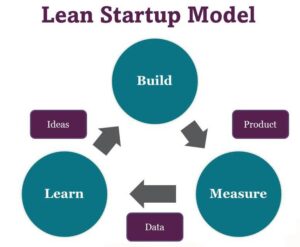
What about if you did want to go the investment route? Because maybe you’ve stumbled on to an idea that’s so hot, you need to roll it out to the market in the fastest time possible. Don’t you think your possible investors will be a lot more interested if you’ve already found a small group of customers that verified that the pain that you’re going to be solving is so great they’re willing to pay 12 months in advance to solve it? That sounds to me like an investment project I’d be much more willing to invest in than one that sounds nice on paper but has no customer validation.
You may even be able to get your customers to become your investors if you target the right type of people during your idea extraction calls and outreach.
Again, many of the ideas that I’ve included in this post came directly from my friend Dane’s excellent course, the Foundation. If you feel you want more in-depth information on that, I suggest you head over to his website. I’m actually a mentor in his course, and I do this for nothing to help him out. He’s basically an idea factory, and what’s more a great fun loving guy and excellent instructor.
If you have some simple mechanics or technical questions, feel free to drop them in the comment. I’ll be sure to respond to them, I’ll be checking this blog daily as part of my outreach and content marketing.
If you want to speak with me about finding a technical team. Hit the button below. It won’t cost you anything and there are no commitments. Remember, this is what I do, I speak to people on the phone most days, all day long and love to discuss ideas and help solve peoples pains.

